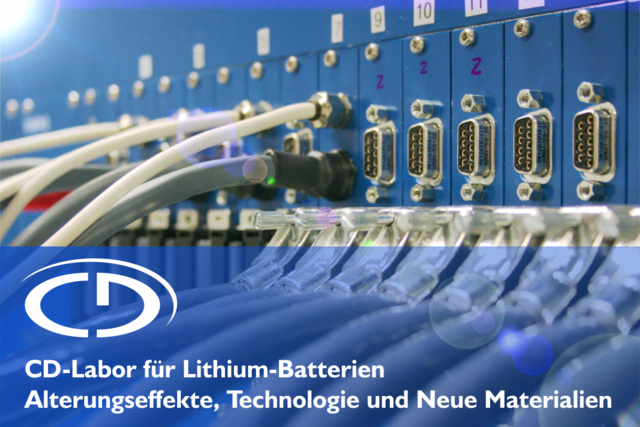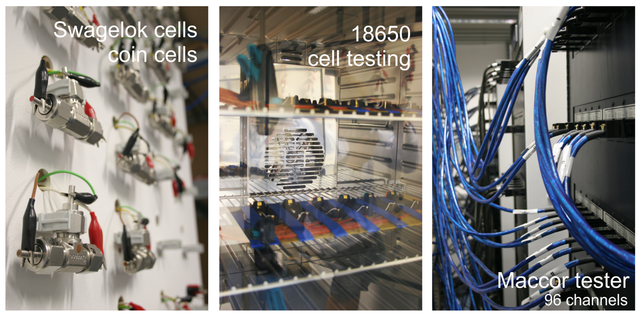
A Christian Doppler Lab for Lithium Batteries
The CD lab has been founded in 2012 and is devoted to improve our understanding of fundamental electrochemical and dynamic processes in materials used in lithium-based batteries. Currently, it is subdivided into two main Modules. Partners form Industry are AVL List (Graz) and Infineon Technologies Austria (Graz, Villach).

The Mission
The tremendous pervasiveness of modern technologies, such as portable consumer electronic products or electric vehicles, which are anticipated to become the key method of transportation in the 21st Century, is generating a constant need for advanced, clean electrochemical energy storage systems. In the medium run, lithium-based batteries are rapidly becoming the technology of choice for this purpose; cf. also the increasing research activities directed towards Li-air batteries. In the Christian Doppler (CD) lab at the TU Graz the target-oriented lithium-ion battery research focuses on both (i) the optimization and development of new concepts and materials such as powerful solid electrolytes to enhance life cycle and safety, as well as (ii) the fundamental study of solid-state electrochemical processes and charge carrier transport influencing power rate capabilities and electrochemical stability. Therefore, identifying (structural) degradation phenomena due to both cycling and calendric ageing, and understanding the underlying mechanisms belong to one of the topics of the CD lab. Emphasis is put on ionic transport in modern solid electrolytes that will help us to develop new all-solid-state batteries.
Key methods that will be applied are lithium NMR and impedance spectroscopy to shed light on ion transport properties from both a macroscopic and microscopic point of view. Moreover, the lab particularly intends to advance primary and secondary high-capacity micro-batteries by taking advantage of, e.g., Si-based anodes.
Module 1: a) Ageing Phenomena in Lithium-Ion Batteries, b) All-Solid-State Batteries with Ceramic electrolytes (AVL List)
Module 2: Si Anodes in µ-Batteries, the Interplay of Electrochemistry and 3D Patterning (Infineon)
Further reading (selected)
Small change - great effect: Steep increase of Li ion dynamics in the anode material Li4Ti5O12 at the early stages of chemical Li insertion W. Schmidt, P. Bottke, M. Sternad, P. Gollob, V. Hennige, M. Wilkening, Chem. Mater. 27 (2015) 1740.
The microstructure matters: breaking down the barriers with single crystalline silicon as negative electrode in Li-ion batteries M. Sternad, M. Forster, M. Wilkening Sci. Rep. 6 (2016) 31712.
see www.lithium.tugraz.at for all publications.

Institut für Chemische Technologie von Materialien Stremayrgasse 9
A-8010 Graz - Austria
Head of the CD lab
Univ.-Prof. Dr. Martin Wilkening http://www.lithium.tugraz.at
